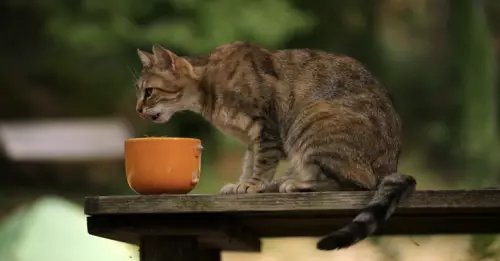Feeding our feline companions is essential for their health, yet how we administer that food often goes unnoticed. Unlike dogs, cats do not require rigid mealtimes; however, they still benefit from an organized feeding routine that ensures they receive the appropriate balance of calories and nutrients. Various feeding strategies exist, and selecting the right one for your cat may depend on several factors including age, health, and activity level.
The Feeding Dilemma: Free-Feeding vs. Scheduled Meals
Pet owners often grapple with the decision of how to feed their cats. Some choose to free-feed, allowing their cats to graze throughout the day, while others prefer to serve meals at specific times. A combination of both methods can also be utilized. Each approach has its advantages and disadvantages, contingent on your individual cat’s needs. Research suggests that free-feeding can lead to overeating, while scheduled meals can help monitor calorie intake more effectively, particularly for cats prone to obesity.
Feral cats have much to teach us about natural eating behaviors. In the wild, they rely on their instincts to hunt and typically consume 8 to 12 small meals per day, which contribute to their nutritional intake. This behavior stems from their evolutionary background, where frequent small meals ensured they met their daily energy needs without excessive weight gain. Interestingly, many feral cats today maintain a healthy weight and fat distribution, a compelling argument for the benefits of smaller, more frequent meals.
The nutritional requirements of cats vary significantly depending on their age. Kittens, for instance, require more food relative to their weight compared to adult cats, necessitating a feeding schedule that accommodates their rapid growth. As they transition to adulthood around one year, their ability to adapt to irregular feeding schedules increases, although regularity in feeding may still provide benefits.
Upon reaching the senior stage at around seven years, it’s critical to maintain a consistent feeding routine. Older cats often exhibit different appetites and might require specialized diets. Changes in behavior, such as constant begging for food, may not always indicate hunger but could signal underlying health issues such as hyperthyroidism or diabetes. Monitoring these changes closely and consulting with a veterinarian can lead to timely interventions and better health outcomes.
Obesity is one of the most prevalent health issues in cats today, with statistics indicating that overweight felines outnumber those at a healthy weight. While a cat’s pleading demeanor can make it difficult for owners to maintain restraint during feeding, it is essential to consider their health first. Overfeeding can lead to severe consequences, including diabetes, joint problems, and a decreased quality of life.
Establishing a feeding plan based on caloric needs is key to maintaining a healthy weight. Allowing cats access to food at fixed intervals has been shown to assist in weight management more effectively than free-feeding. Regular meals help regulate glucose levels and metabolism, promoting healthier eating habits.
The type of food provided can influence feeding habits. Cats often prefer wet or raw food due to the higher moisture content, yet these options spoil more quickly than dry food. For this reason, pet owners should be cautious with free-feeding these types of food, ensuring freshness and avoiding waste.
A household that consists of multiple people feeding a cat can complicate matters, potentially leading to overfeeding. It’s important for everyone in the home to communicate regarding feeding practices and to keep a log of portions given. The dynamics become even more challenging in multi-cat households where food consumption can vary significantly among individuals.
Moreover, it’s crucial to adapt feeding schedules to fit your lifestyle. Busy mornings may necessitate evening feedings, while a flexible approach that keeps nutritional needs in focus is paramount. The goal should always be to ensure that your cat’s daily caloric requirements are consistently met while considering your household routine.
Understanding your cat’s instinctual behaviors provides valuable insight into developing a feeding regimen that promotes wellness. Cats can adapt to set mealtimes, but it is critical to select a plan that aligns with both their instincts and your routine. For any planned changes to their diet or feeding schedule, a consultation with a veterinarian is recommended to ensure that your cat remains healthy and happy.
Feeding is a significant aspect of cat care that encompasses more than simply filling their bowls. The choices you make regarding their diet and feeding schedule can have long-lasting effects on their health and overall quality of life. Tools, advice, and resources such as those offered by Nom Nom can guide you to make informed nutritional decisions tailored to your feline friend’s specific needs.


Leave a Reply